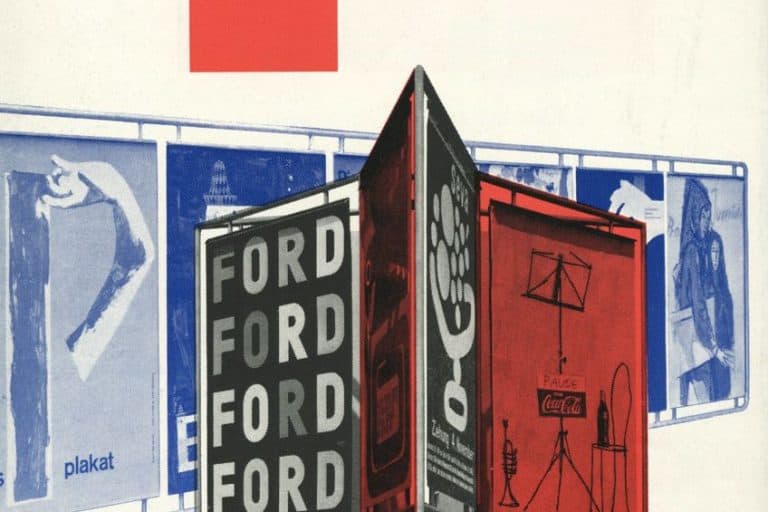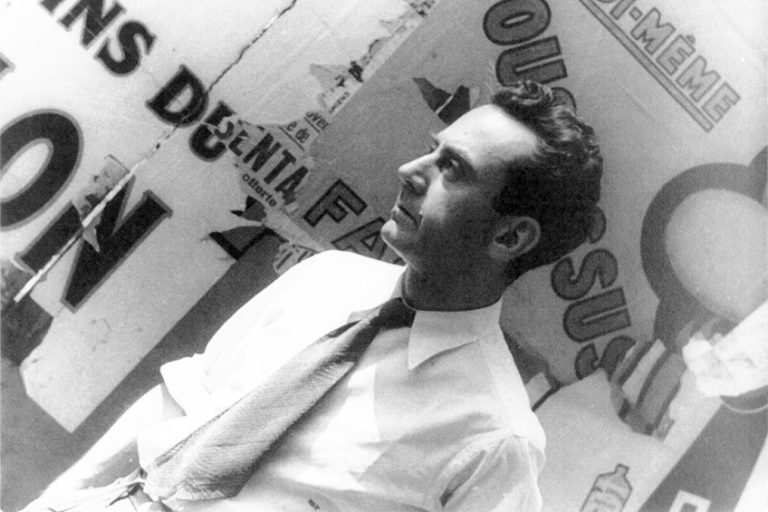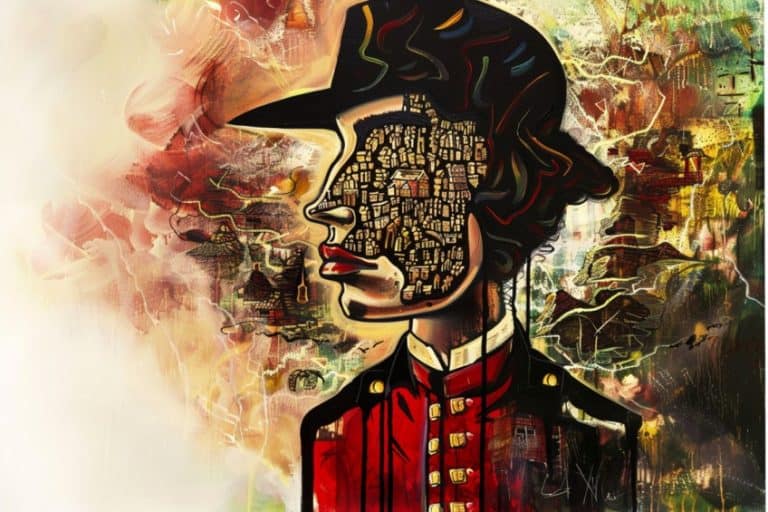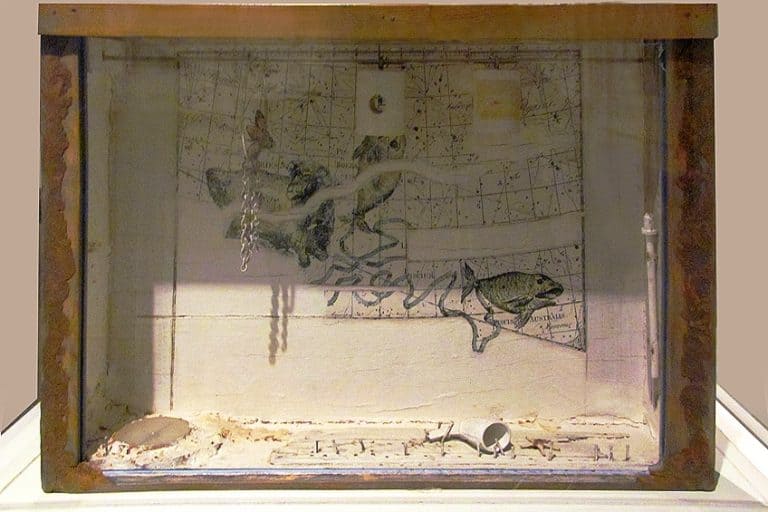Pierre-Auguste Renoir – A Look at Renoir’s Art and Biography
Pierre-Auguste Renoir was a renowned Impressionist artist hailing from France. Renoir’s Rubenesque paintings display his eye for elegance and beauty which resulted in his prominence within the Impressionist movement. Pierre-Auguste Renoir is most appreciated for his artworks that depict the leisurely lifestyle of contemporary Paris in the last 30 years of the 19th century such as Luncheon of the Boating Party (1881) as well as his Rubenesque nudes.
Pierre-Auguste Renoir’s Biography
Though he is best known as a colorist with a discerning eye for acquiring the motion of light and shadows, Renoir’s paintings began to shift towards the Renaissance style in the midpoint of his working life, leading him to incorporate more composition and line work into his later artworks and produce some of his period’s most iconic works of art. Renoir was instrumental in inventing the Impressionist style in the late 1860s, working with Claude Monet, but Renoir’s art has a very human quality that distinguishes him.
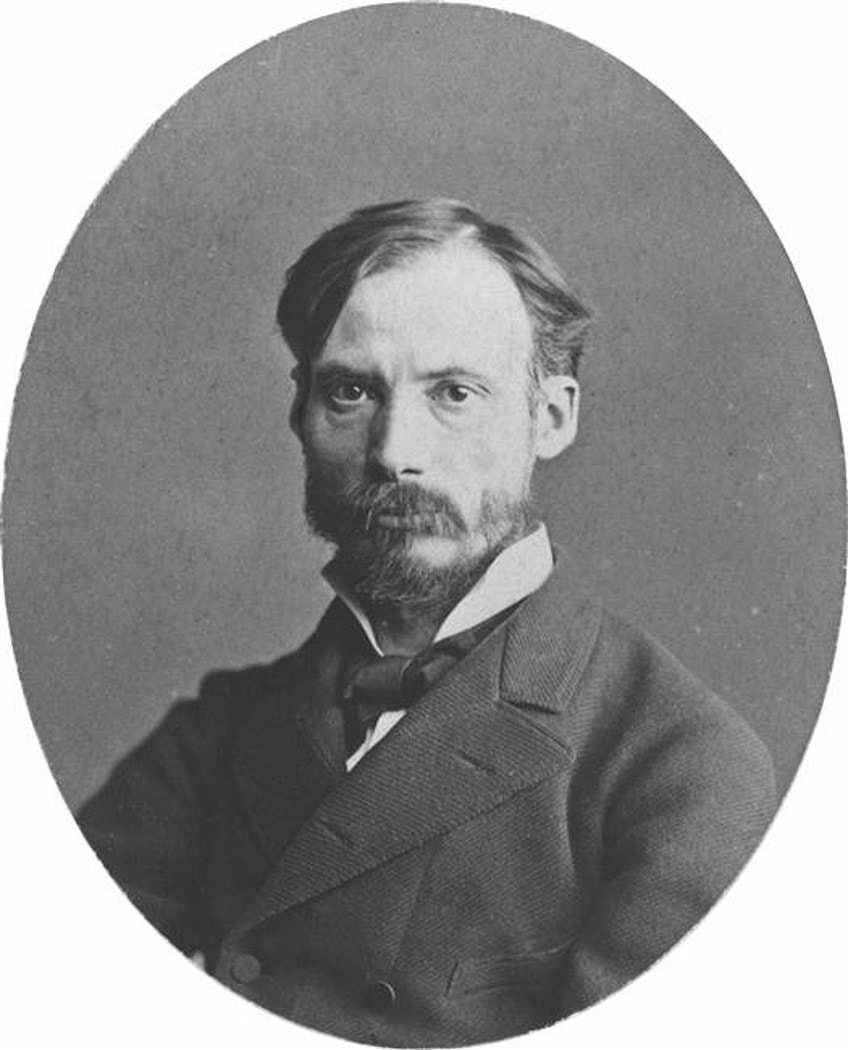
| Nationality | French |
| Birthdate | 25 February 1841 |
| Birthplace | Limoges, France |
| Date of Death | 3 December 1919 |
| Associated Movements | Impressionism |
Pierre-Auguste Renoir’s Youth
In 1841, Renoir was born in Limoges, France. Renoir’s father, Léonard Renoir, was a humble tailor, so the family relocated to Paris in 1844 in quest of better opportunities. Renoir was close to the Louvre because of their home’s position on the rue d’Argenteuil in downtown Paris. Even though the young Renoir possessed a natural flair for sketching, he excelled at singing. His tutor, Charles Gounod, encouraged his gift.
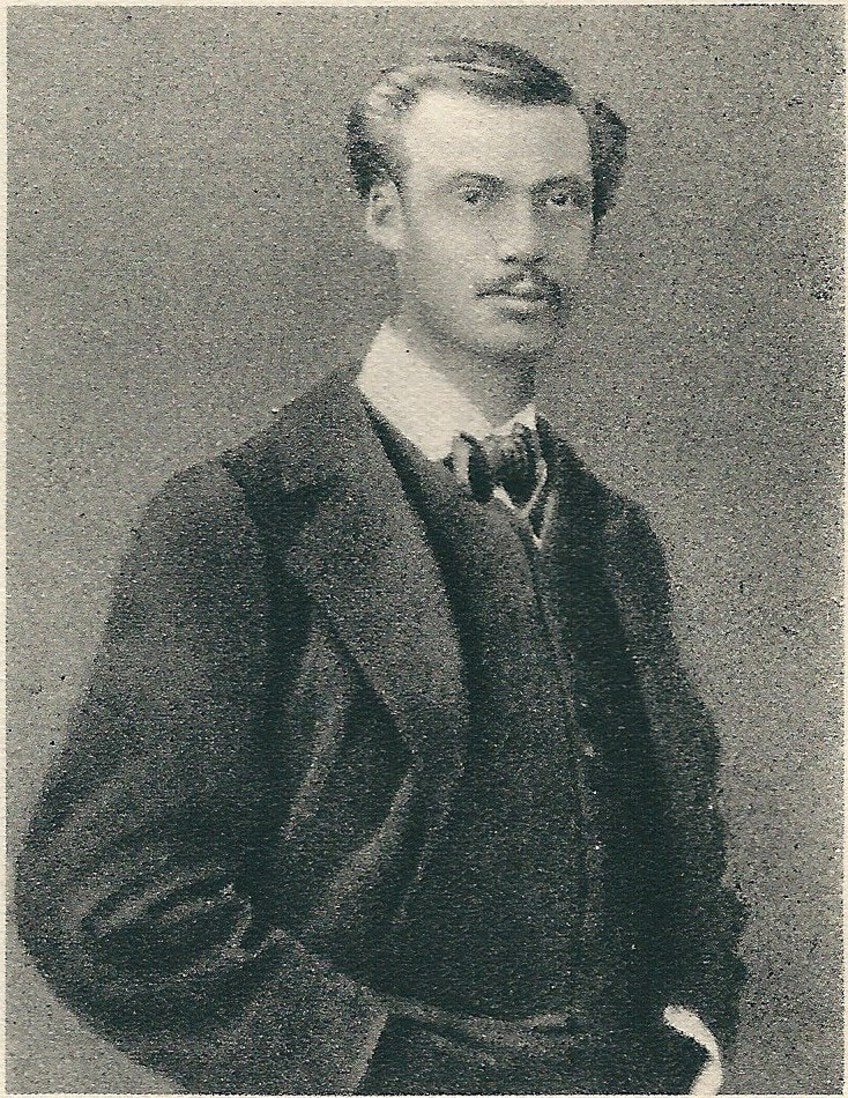
Renoir, however, had to quit his piano studies and abandon school at the age of 13 to undertake an internship in a porcelain manufacturing company due to the family’s financial hardships. Although Renoir had a flair for his art, he often became bored with it and sought shelter in the Louvre’s galleries. The factory owner saw his apprentice’s potential and informed Renoir’s family.
After this, Renoir began attending courses in order to get admission to the Ecole des Beaux-Arts.
Renoir was obliged to seek alternative sources of support when the porcelain firm used mechanical replication procedures in 1858. Before enrolling in art school, he painted wall hangings for foreign preachers as well as fan ornaments. In 1862, Renoir moved to Paris to pursue art under Charles Gleyre. He met Frédéric Bazille, Alfred Sisley, and Claude Monet while there. During the 1860s, he did not always have sufficient finances to purchase paints.
Renoir’s first Salon triumph came in 1868 with the work Lise with a Parasol (1867), which represented his girlfriend at the time, Lise Tréhot. Although he began displaying works at the Salon de Paris in 1864, recognition was slow to come, due in large part to the turbulence of the Franco-Prussian War.
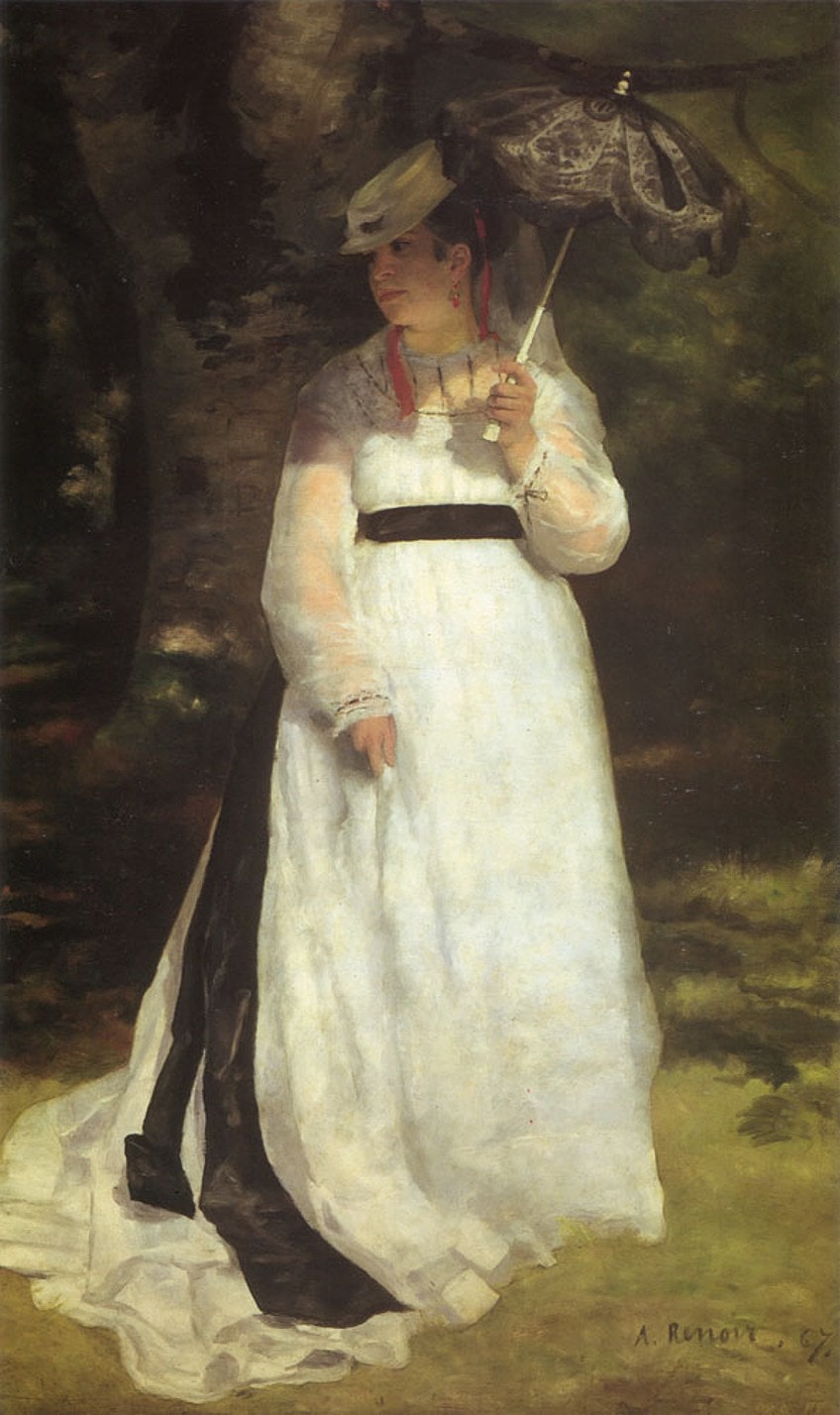
In 1871 during the Paris Commune, as Renoir was painting on the banks of the Seine Waterway, some Communards mistook him for a spy and were about to toss him into the water when a Communard commander, Raoul Rigault, identified Renoir as the person who had previously defended him.
In 1874, Renoir’s 10-year acquaintance with Jules Le Cur and his household came to a close, and he sacrificed not only the vital support obtained via the partnership but also a gracious invitation to stay in their house located in Fontainebleau and its gorgeous forest.
The loss of a favored painting location led to a significant shift in the subject matter.
The Adult Years of Pierre-Auguste Renoir
The subject matter and style of prior modern artists Edouard Manet and Camille Pissarro influenced Renoir’s paintings. Following a succession of disappointments by Salon juries, Renoir collaborated with Sisley, Monet, Pissarro, and several other painters to stage the first Impressionist show in April 1874, in which he presented six works.
Although the exhibition’s critical reception was mostly negative, Renoir’s art was fairly favorably received. Two of his pieces were presented alongside Durand-Ruel in London the same year.
Renoir presented largely portraits during the second Impressionist exhibition in 1876, hoping to ensure a living by obtaining portrait engagements. The following year, when the group had its third show, he contributed a wider variety of works, including The Swing (1876) and Dance at Le Moulin de la Galette (1876).

Renoir did not participate in the fourth and fifth Impressionist exhibits, instead resuming his submissions to the Salon. Renoir was a renowned and stylish artist by the close of the 1870s, especially with the triumph of his work Mme Charpentier and her Children (1878) at the 1879 Salon.
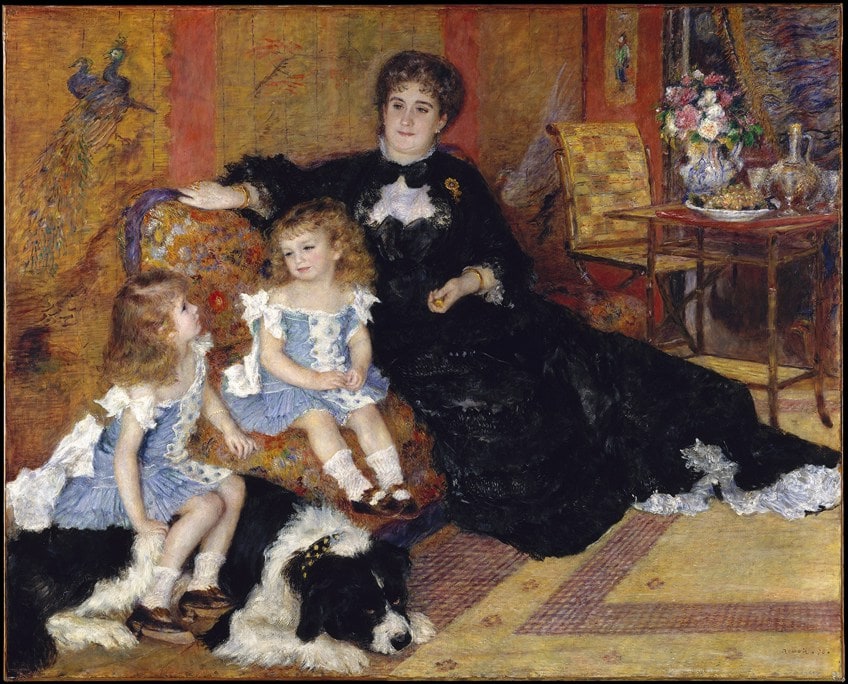
In 1881, he went to Algeria, a region he linked with Eugène Delacroix, and then to Madrid to admire Diego Velázquez’s paintings. After that, he went to Italy to witness Titian’s masterworks in Florence as well as Raphael’s works in Rome. Renoir visited composer Richard Wagner at his house in Palermo, Sicily, on the 15th of January, 1882. Renoir completed Wagner’s painting in approximately 35 minutes in total.
Renoir spent six weeks in Algeria in the same year after catching pneumonia, which severely impaired his respiratory system.
Renoir spent the summer of 1883 on Guernsey, one of the English Channel Islands with a variegated scenery of bays, cliffsides, and beaches, where he painted 15 works in just over a month. The majority of them depict a bay in Saint Martin’s, Moulin Huet. In 1983, the Bailiwick of Guernsey produced a series of commemorative postage stamps commemorating these artworks.
Renoir recruited Suzanne Valadon as a sitter while working and living in Montmartre; she sat for him in artworks such as Dance at Bougival (1883) and The Large Bathers (1887) as well as many of his other artists; during that period, she studied their skills and ultimately became one of the prominent artists of the era.

Renoir gave many works to the “French Impressionist Paintings“ collection as a symbol of his allegiance in 1887, the year Queen Victoria commemorated her Golden Jubilee, at the behest of the queen’s companion, Phillip Richbourg. In 1890, he wedded Aline Victorine Charigot, a seamstress 20 years his younger, who had already acted as a subject for Luncheon of the Boating Party (she is the lady on the left frolicking with the hound) in 1881, and with whom in 1885 he had a son, Pierre.
Renoir painted several pictures of his wife and ordinary family life after they married, including their offspring and their caregiver, Aline’s niece Gabrielle Renard. The Renoirs would have three sons: Pierre, followed by Jean, and then finally Claude.

The Later Years of Pierre-Auguste Renoir
Renoir was diagnosed with rheumatoid arthritis in 1892. In 1907, he relocated to the milder environment of “Les Collettes,” which was a property near the Mediterranean shore in the hamlet of Cagnes-sur-Mer. Renoir produced over the last 20 years of his life, despite having terrible arthritis that interfered with his mobility.
He acquired increasing hand abnormalities and ankylosis of his one shoulder, which forced him to adapt his painting approach.

It has been widely believed that Renoir painted with a brush attached to his paralyzed digits in the latter phases of his arthritis, but this is incorrect; Renoir was still able to grip a paintbrush, but he needed an aide to position it in his hand. The painter’s hands were wrapped in bandages to minimize skin irritation, as shown in later images of him.
Renoir went to the Louvre in 1919 to see his works displayed among the great masterpieces.
During this time, he collaborated on sculptures with Richard Guino, a young artist who worked with clay. Renoir also employed a rolling canvas to aid in producing enormous works owing to his restricted joint mobility. Renoir’s picture of Austrian actress Tilla Durieux (1914) features whimsical flecks of brilliant color on her scarf that complement the actress’s classical attitude whilst demonstrating Renoir’s talent barely five years before his death on the 3rd of December, 1919.

Alexandre Renoir, Renoir’s great-grandson, is also a talented artist. “Beauty Remains”, an exhibit of his artworks, was held in 2018. The exhibition title is derived from a famous phrase by Pierre-Auguste, who reportedly observed, “The agony goes, but the beauty stays,” when asked why he persisted to paint in his senior years despite suffering from terrible arthritis.
Renoir’s Artworks
Renoir’s artworks are known for their vivid light and rich color, with the majority of his subjects depicted in personal and frank setups. One of his main interests was Rubenesque nudes. Yet, a reviewer in Le Figaro stated in 1876, “Try to demonstrate to Monsieur Renoir that a female’s torso is not a mass of rotten flesh with those purple green spots that imply a condition of total rancidity in a cadaver.”
However, in true Impressionist fashion, Renoir’s artworks indicated the nuances of a scenario with loosely brushed bits of color, so that his characters smoothly blend with one another and their environment.
The first of Renoir’s paintings demonstrates the impact of Eugène Delacroix’s colorism and Camille Corot’s brilliance. He liked the naturalism of Édouard Manet and Gustave Courbet, and his initial artwork is similar in its use of black as a hue to theirs. Renoir was a fan of Edgar Degas’ feeling of motion. Renoir was said to have liked the 18th-century artists Jean-Honoré Fragonard and François Boucher.
Diana (1867) is a remarkable instance of his early works and indications of the impact of Courbet’s naturalism. The picture, purportedly a mythical subject, is a naturalistic studio production, with the person attentively studied, solidly sculpted, and overlaid above a fabricated scene.
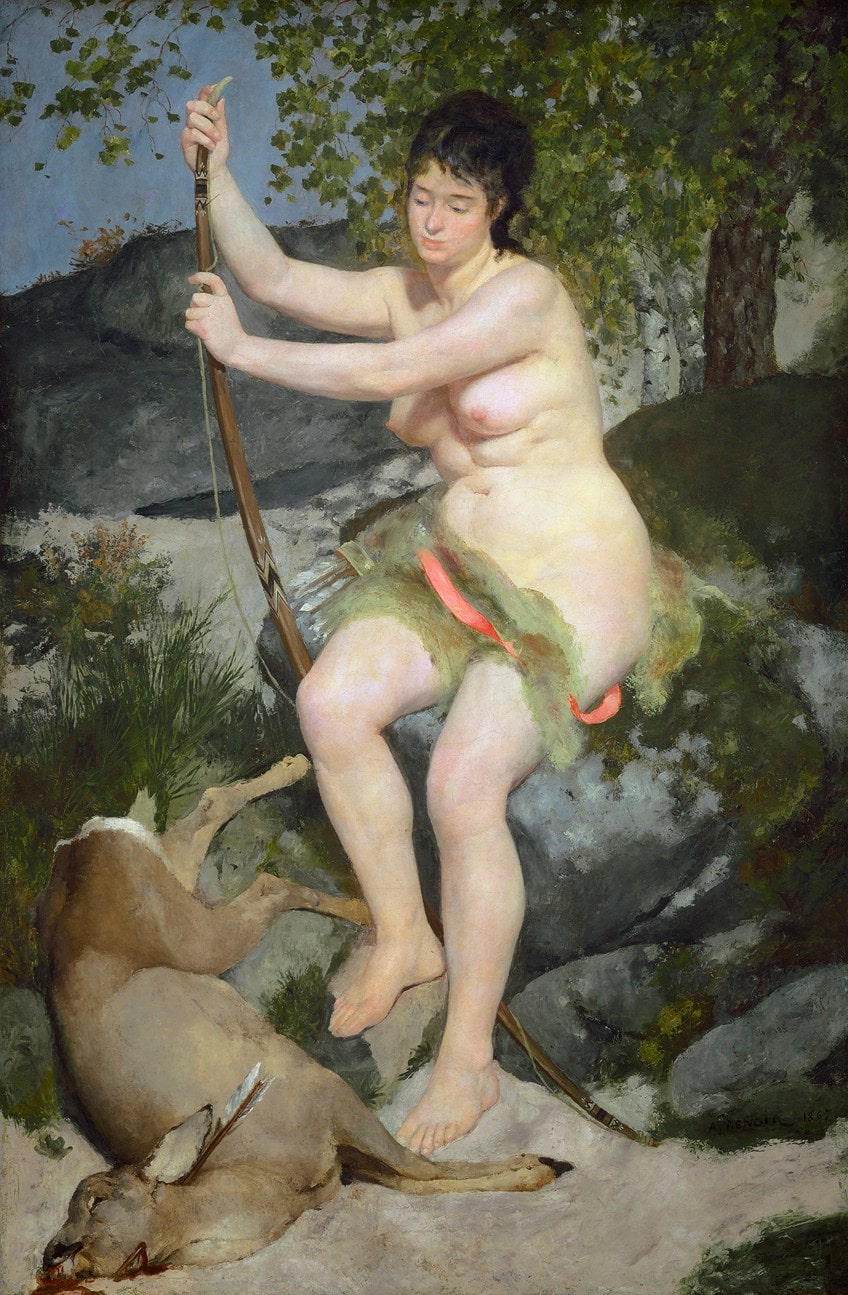
Renoir’s heightened personal sensitivity to feminine sexuality is there, even if the piece is a “student” effort. The subject was Lise Tréhot, the artist’s lover at the time and the subject of several works. During the late 1860s, Renoir and his companion Claude Monet learned, via the practice of painting sunlight and water outside, that the coloring of a shadow is not black or brown, but the reflecting colors of the things around them. This is a phenomenon known today as diffuse reflected light. There are several sets of works in which Monet and Renoir produced alongside each other on the same scene, such as La Grenouillère (1869).

Renoir’s Dance at Le Moulin de la Galette (1876) is among the most well-known Impressionist artworks. The artwork portrays a bustling open-air scene at a renowned dancing area on the Butte Montmartre near where he resided. His early mature paintings were often Impressionist pictures of actual life, full of glistening light and color.

Nevertheless, by the mid-1880s, he had abandoned the trend to use a more controlled formal approach in portraiture and figure works, notably of females. A trip to Italy in 1881, when he viewed paintings by Raphael as well as other Renaissance painters, assured him that he was on the wrong track, and he created in a more severe manner over the following several years in an effort to reconnect to classicism.
He altered his view again after 1890.
He reverted to thinly stroked color to dissolve contours, as he had done previously. From this point on, he focused on colossal Rubenesque nudes and domestic situations, such as Large Bathers (1887) and Young Girls at the Piano (1892).

The former is the most characteristic and accomplished of Renoir’s late, fleshed-out nudes. He was a prolific artist who produced thousands of paintings. Renoir’s warm sensitivity made his canvases some of the most famous and regularly copied pieces in the history of art.
The Barnes Foundation in Philadelphia houses the biggest collection of his works, including 181 works.
Bernheim-Jeune produced a detailed five-volume annotated catalog of all the artist’s known works between 1983 and 2014. Renoir utilized Bernheim-Jeune, the last remaining major art dealer. The Wildenstein Institute is working on a critical catalog of Renoir’s art, although it has not yet been released. An episode of the television series Fake or Fortune included a dispute between these two groups about an unidentified painting at Picton Castle.
Accomplishments of Pierre-Auguste Renoir
Renoir was instrumental in the development of the Impressionist style in the late 1860s, although his work is distinguished by a clearly human character. Renoir had a fine eye for both personal domestic life and the trends of the time, and his depictions of happy families and well-dressed French enjoyment seekers bridged the gap between Impressionism’s more adventurous ambitions and a contemporary, middle-class art audience.
He was the first Impressionist to recognize the constraints of an art form focused solely on optical sensibility and light influences.
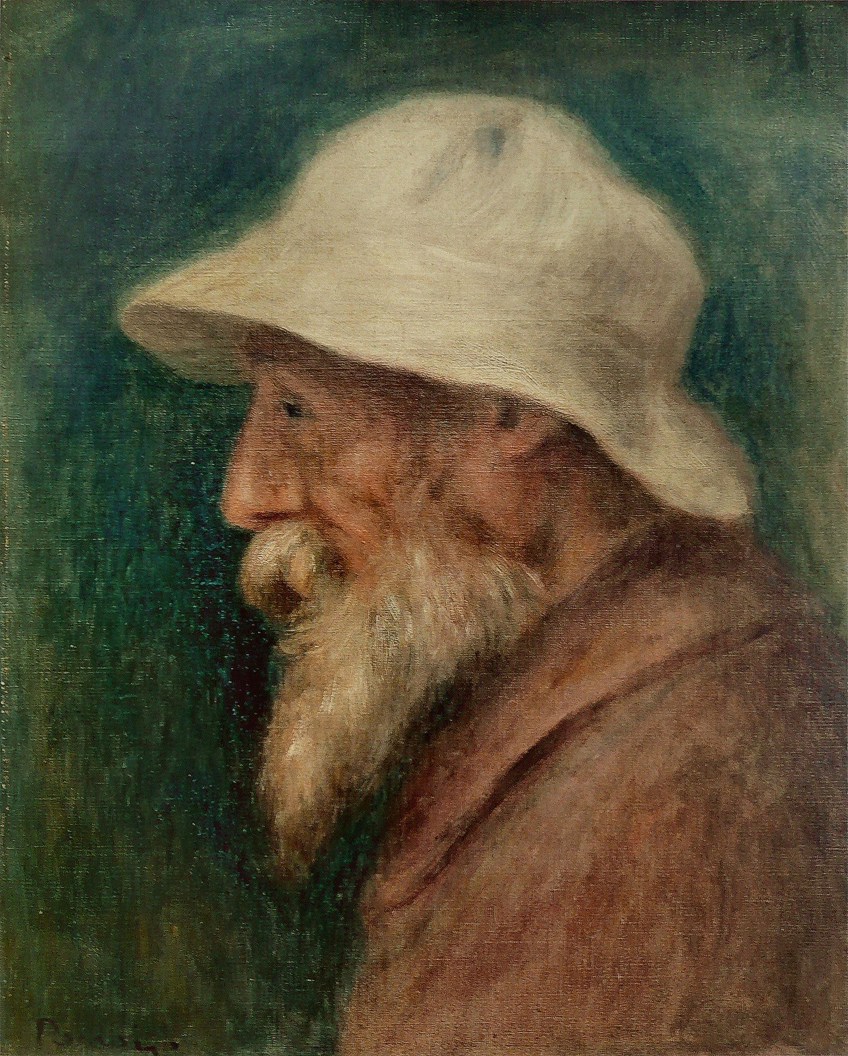
Even though his discoveries in this area will always remain a part of his art, he reiterated the necessity of proper arrangement and fundamental structures in modern artworks, establishing an organized, colossal style in his mature works that appreciated the highlights of High Renaissance artworks. Renoir’s model became essential for the major French high modernist trends of Cubism and Fauvism. The forefathers of these genres, like Renoir, emphasized color, structure, and dimension rather than fast drawings of discrete situations.
His organized, vibrant paintings provided an important link between previous colorists such as Peter Paul Rubens and Raphael.
Our List of Famous Renoir Paintings
Renoir’s self-portraits and Rubenesque paintings are highly valued. One can view Renoir at the Metropolitan Museum of Art as well as many other world-renowned museums and galleries. Here is a list of popular Renoir paintings that we recommend checking out:
- Luncheon of the Boating Party (1881)
- Two Sisters (1881)
- Portrait of Irène Cahen d’Anvers (1880)
- Lise Sewing (1866)
- A Girl With a Watering Can (1876)
- By the Water (1880)
- Dance at Bougival (1883)

Further Reading
There is only so much information one can fit into an article about an artist’s life. Pierre-Auguste Renoir’s biography is full of tales that have been left untold on these pages. If you would like to learn more about Renoir’s paintings and Rubenesque nudes, we can recommend the following books:
Delphi Complete Works of Pierre-Auguste Renoir by Renoir (2015)
The renowned Impressionist, Pierre-Auguste Renoir, created a breathtaking output of oil paintings that are acclaimed for their incomparable beauty and portrayal of feminine sexuality. This beautiful collection contains all of Renoir’s works, as well as succinct introductions, over 1500 high-quality photographs, and the usual Delphi supplementary content. (First Version) Over 1500 paintings by Pierre-Auguste Renoir, completely indexed and grouped in historical and alphabetical order.
Reproductions of rare works are included. The book includes a unique “Highlights” chapter with succinct introductions to the masterpieces and context information.
Also included are enlarged “Depth” photos, as seen in conventional art publications, allowing you to examine Renoir’s iconic paintings in greater detail. This volume features hundreds of color photos and is highly recommended for browsing on tablets, or as a useful reference resource on more traditional E-readers. It has been created in unique chronological and alphabetical content charts for the whole collection of paintings. Laid out in a manner that one can easily find the artworks you wish to look at. Also includes an extra biography – learn about Renoir’s artistic and private life. The plates are chronologically ordered by a scholar.
- The complete oeuvre of paintings by Pierre-Auguste Renoir
- Includes many hundreds of images in color and rare works
- The world's first digital e-Art book on Pierre-August Renoir
Pierre-Auguste Renoir Sensuality and Beauty by a French Impressionist Master by Andrew Livingstone (2020)
One of the last great French Impressionists was Pierre-Auguste Renoir. His art reflects his appreciation of elegance and female sensuality. This is a compact color paperback compilation of 23 Renoir paintings. Although he often painted landscapes and other locations, his subjects were frequently elegant ladies and festivities. Madame Georges Charpentier and Her Children is an excellent example of motion as an important component of human perception. The image portrays Charpentier’s girls’ lively personalities, gaining a feeling of vitality. He showed several paintings at an anti-Salon display put on by impressionists at that era, but he eventually acquired legitimate acclaim and distinction at the Salon proper. By the 1870s, he was well-known as an artist.
And that concludes our exploration of the artist Pierre-Auguste Renoir. Renoir’s self-portraits and scenes have a very human quality that distinguishes Renoir’s art from others of his era. Renoir’s Rubenesque paintings display his eye for elegance which resulted in his prominence within the Impressionist movement.
Frequently Asked Questions
Who Was Pierre-Auguste Renoir?
Pierre-Auguste Renoir was a well-known Impressionist painter from France. Renoir’s Rubenesque paintings demonstrate his sense of beauty, which helped him rise to popularity in the Impressionist movement. Pierre-Auguste Renoir is most known for his paintings that represent the leisurely lifestyle of modern Paris in the last 30 years of the 19th century, such as Luncheon of the Boating Party (1881) and his Rubenesque nudes. It may be claimed that Renoir and his partner Monet are to Impressionism what George Braque and Pablo Picasso are to Cubism: their canvas explorations generated a wholly contemporary visual lexicon and defined the aesthetic terrain that the trend would grow to occupy in the coming decades.
Where Can I View Renoir’s Paintings?
Renoir’s artworks are world-famous and can be viewed in many museums and exhibitions. You can find exhibitions of Renoir at the Metropolitan Museum of Art, The Tate Britain, the Kimbell Art Museum, and many more. Another exhibition of Renoir’s artwork can also be found at the Philadelphia Art Museum.
Why Were Renoir’s Paintings So Well-Loved?
Renoir was the first Impressionist painter to recognize the restrictions of an art form focused solely on optical sensibility and light effects. Though his findings in this sector will always be a part of his art, he reasserted the importance of composition and underlying structure in contemporary painting, establishing an organized, colossal style in his mature work that acknowledged the merits of High Renaissance art. His work is distinguished by a distinctively human aspect. Renoir had a fine eye for both personal domesticity and the trends of the day, and his depictions of happy families and Parisian pleasure-seekers bridged the gap between Impressionism’s more innovative ambitions and a contemporary, middle-class art audience. His controlled, colorful works served as a key link between older colorists such as Peter Paul Rubens, Raphael, Eugène Delacroix, and Jean-Antoine Watteau and 20th-century giants like Pablo Picasso and Henri Matisse.
What Are a Few Well-Known Renoir Paintings?
Some of Renoir’s most famous paintings include: Luncheon of the Boating Party (1881), Two Sisters (1881), Portrait of Irène Cahen d’Anvers (1880), Lise Sewing (1866), A Girl With a Watering Can (1876), By the Water (1880), Dance at Bougival (1883), Diana the Huntress (1867), and La Loge (1874).
Isabella studied at the University of Cape Town in South Africa and graduated with a Bachelor of Arts majoring in English Literature & Language and Psychology. Throughout her undergraduate years, she took Art History as an additional subject and absolutely loved it. Building on from her art history knowledge that began in high school, art has always been a particular area of fascination for her. From learning about artworks previously unknown to her, or sharpening her existing understanding of specific works, the ability to continue learning within this interesting sphere excites her greatly.
Her focal points of interest in art history encompass profiling specific artists and art movements, as it is these areas where she is able to really dig deep into the rich narrative of the art world. Additionally, she particularly enjoys exploring the different artistic styles of the 20th century, as well as the important impact that female artists have had on the development of art history.
Learn more about Isabella Meyer and the Art in Context Team.
Cite this Article
Isabella, Meyer, “Pierre-Auguste Renoir – A Look at Renoir’s Art and Biography.” Art in Context. December 13, 2021. URL: https://artincontext.org/pierre-auguste-renoir/
Meyer, I. (2021, 13 December). Pierre-Auguste Renoir – A Look at Renoir’s Art and Biography. Art in Context. https://artincontext.org/pierre-auguste-renoir/
Meyer, Isabella. “Pierre-Auguste Renoir – A Look at Renoir’s Art and Biography.” Art in Context, December 13, 2021. https://artincontext.org/pierre-auguste-renoir/.







